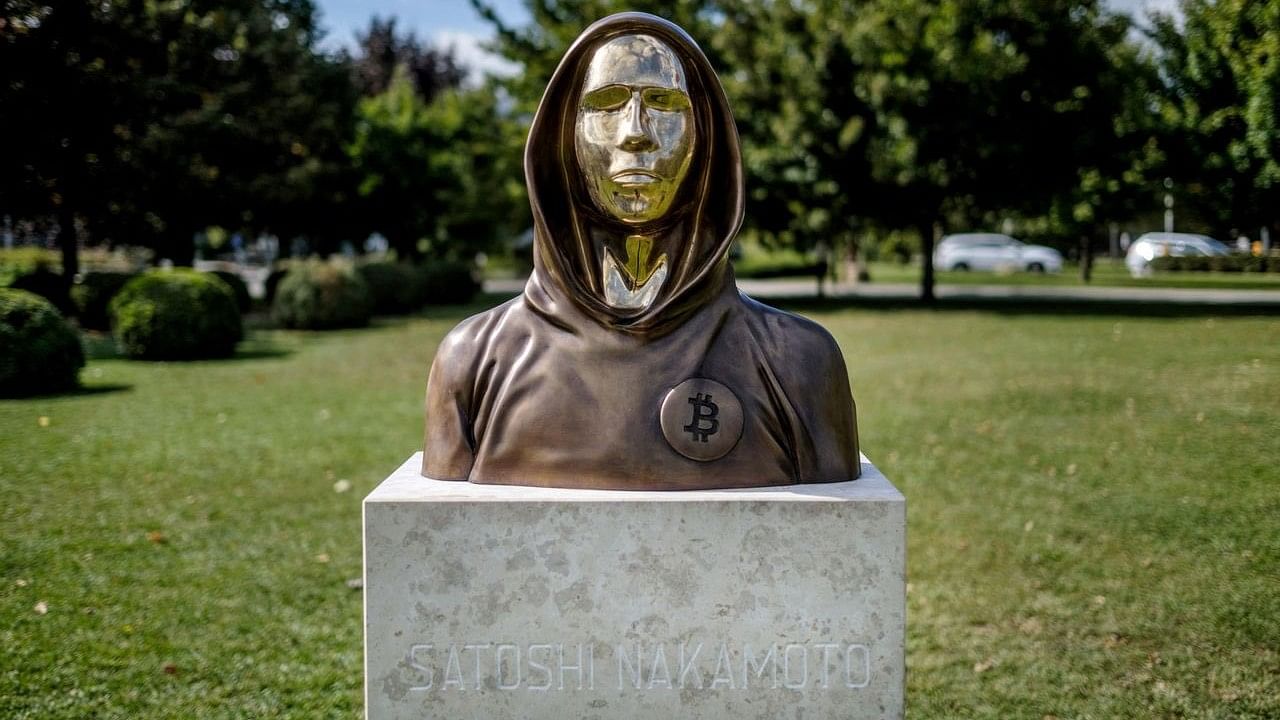
A statue in Budapest dedicated to Satoshi Nakamoto
Credit: X/@WatcherGuru
By Tyler Cowen
Who is or was Satoshi Nakamoto, the creator of Bitcoin? A recent HBO documentary names Peter Todd, with the possible assistance of Adam Back. Suffice to say the truth here remains an open question, but it is worth asking: Why does anyone care?
There is in fact a great deal at stake, certainly at the intellectual level and probably financially and politically as well. It’s only natural, and even healthy, to be curious about who could have created more than $1 trillion in market capitalization.
Presume that Satoshi has passed away, which would explain why we no longer hear from Satoshi. Hal Finney is one oft-cited Satoshi candidate, and he died in 2014. Under this scenario, Satoshi’s reputation is likely to remain intact: He or she stays mysterious and cannot do anything to disgrace Bitcoin. Satoshi’s large and valuable “origin block” of Bitcoin is less likely to be sold. It might be frozen forever, with its current value in the tens of billions of dollars.
A deceased Satoshi also means that Satoshi cannot step forward and advocate changes in the rules of Bitcoin, such as enabling the creation of more Bitcoin. That too is likely bullish for the value of Bitcoin. A living Satoshi, in contrast, might exercise considerable sway over Bitcoin users and institutions, if he or she stepped forward and suggested some rule changes.
A parallel with religion is instructive. Most of the world’s major religions are based on the teachings of dead people. That makes them easier to run compared to religions with living charismatic leaders who receive regular press coverage and are vulnerable to mistakes and gaffes. It is probably best for Bitcoin if Satoshi is no longer alive.
It also matters if Satoshi was a single person or a small team. If a single person, that might mean future innovations are more likely than generally thought: If Satoshi is a lone individual, then maybe there there are more unknown geniuses out there. On the other hand, the Satoshi-as-a-team theory would mean that secrets are easier to keep than people think. If that’s the case, then maybe conspiracy theories are more true than most of us would care to admit.
According to many speculations, Satoshi came out of a movement obsessed with e-cash and e-gold mechanisms, dating to the 1980s. People from those movements who have been identified as potential Satoshi candidates include Nick Szabo, Hal Finney, Wei Dai, David Chaum and Douglas Jackson, among others. At the time, those movements were considered failures because their products did not prove sustainable. The lesson here would be that movements do not truly and permanently fail. It is worth experimenting in unusual directions because something useful might come out of those efforts.
If Peter Todd is Satoshi, then it’s appropriate to upgrade any estimates of the ability of very young people to get things done. Todd would have been working on Bitcoin and the associated white paper as a student in his early 20s. At the same time, if the more mainstream Adam Back is involved, then maybe the takeaway is that rebellious young people should seek out older mentors on matters of process and marketing.
Whoever Satoshi may be, the fact that the origin block has not been moved raises deep questions about human motivation. Do some people just not want to be multibillionaires? What reasons might there be for not cashing in? Perhaps Satoshi died very suddenly — but even a dying Satoshi might have been expected to allocate the funds in some matter, if only to a relative or to charity. Or did Satoshi destroy the password in a fit of pique or possible self-restraint?
One of the more extreme (and to me less plausible) theories is that the CIA is Satoshi, or at least behind Satoshi. If that’s true, then the CIA is far more innovative than I thought. It is widely known for its cryptographic talent, but it is less well-known for being innovative.
Whatever the story, it is a very interesting one. Perhaps Satoshi is still alive, and correctly identifies extreme fame and wealth as something to be avoided. Someday, I am confident, we will learn who Satoshi is or was. And we will have to change our views of the world accordingly.